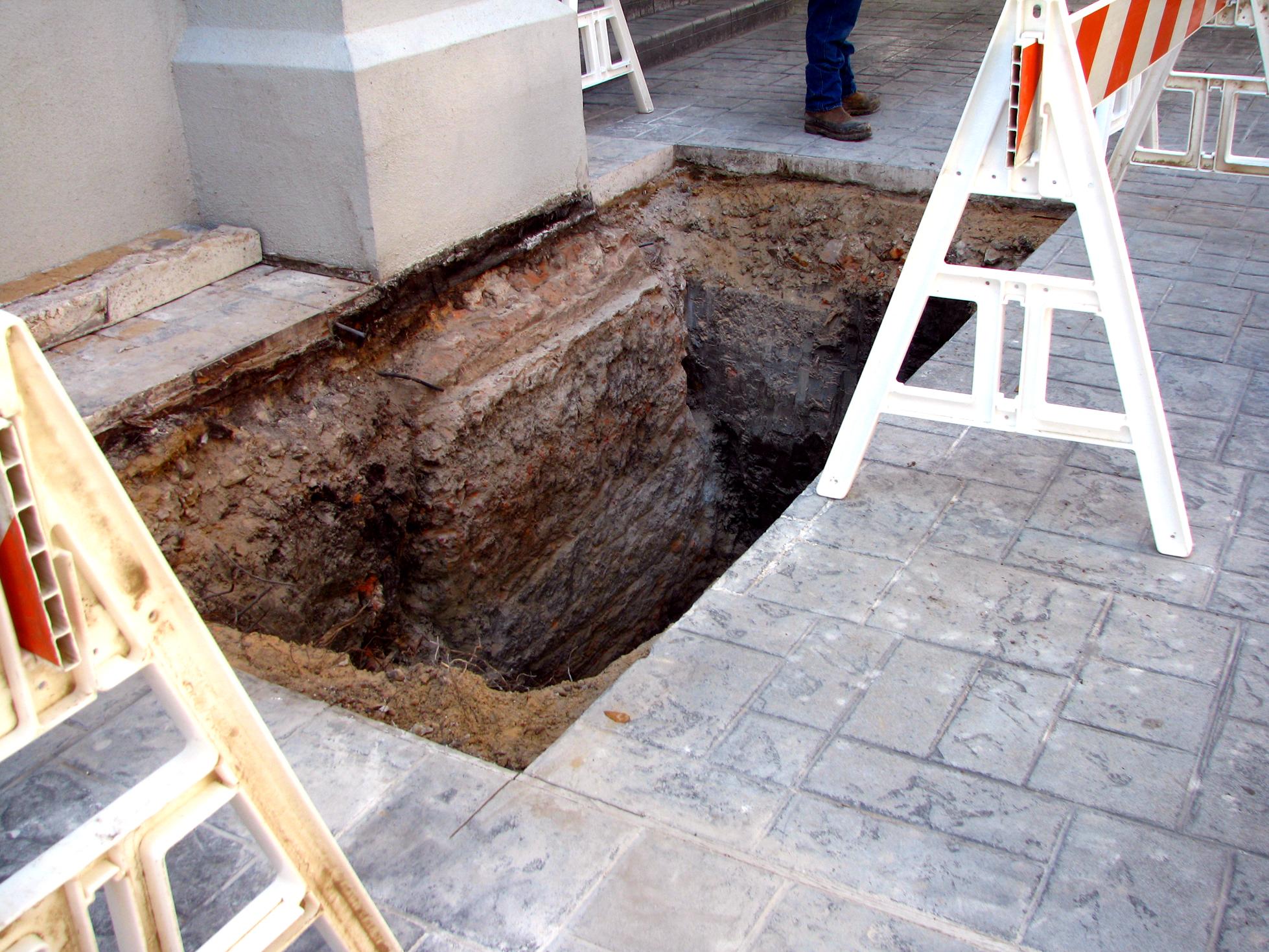As buildings age, their structural conditions can deteriorate, causing damage and safety concerns. In order to mitigate this, it’s important to engage in the regular inspection and condition assessment of buildings for diagnosis.
One common form of structural deterioration is referred to as building movement and can surface in varying ways, including uneven floor slabs, cracks in walls, uneven ceiling panels, excessively compressed or extended joints, racked doors, water infiltration, and in extreme cases shifting or leaning columns or walls. Of course, when deformations continue untreated, the distress worsens, and the safety of the building and occupants is compromised.
Typically, building movement can be categorized in three primary ways: foundation or deep movement, slab-on-ground movement, and structural deficiencies.
What to Consider
Excessive movement affects occupant comfort, perception of safety, building serviceability, structural durability, and actual structural safety. As an example, the movement of slab-on-ground can result in the creation of trip hazards or sloped slab that exceeds ADA requirements or local accessibility standards, while structural safety concerns arise from unstable racked structures that can collapse.
Environmental factors also come into play. If the area is known for bad soil, poor site drainage, or large trees near the exterior perimeter of the building can exacerbate movement causing seasonal fluctuations of movement during the rainy season or during extended droughts.
Identifying problems and addressing them sooner mitigates both risk and cost, often making the extent of the repair much less.
With that in mind, how can property owners tackle issues preemptively?
There are some early diagnostic questions to consider:
- Is the distress localized to one area or global?
- What type of distress are they noticing?
- What part of the building is experiencing the movement?
- Are there any uneven slabs?
- Are there any openings such as doors or windows no longer operating?
- Has there been a recent change in use of the building or recent construction in or around the building?
Holistic Approach
It is significant to note that some level of building movement is acceptable and even expected. Depending on the site-specific soils, building materials, and location, there are varying degrees of expectations, uneven surfaces, and deflections. For example, building code allows for a limited amount of deflection that differs for various framing elements over a given length or height, and the slab-on-ground has an allowable tilt or curvature that is acceptable by code.
Building movement requires an engineering investigation to identify the root causes of the movement and to provide recommendations that address both the immediate concern and the long-term building performance. To address and mitigate ongoing building movement, it is often crucial that repairs be performed in tandem with one another in order to maintain the building. For instance, to properly address slab-on-ground-related distress, it is important to mitigate sources of soil moisture in conjunction with repairing the slab-on-ground while at the same time implementing repairs to the finishes that can accommodate some future differential movement.
At Walter P Moore, our team incorporates a holistic approach, combining the immediate needs with the long-term building performance. Walter P Moore’s expertise and technical knowledge combined with a focus on understanding our client’s needs allows us to provide repair recommendations and designs that are both practical and efficient.
About the Authors
Dan Barbuto, PE, is a Senior Project Manager for Walter P Moore’s Diagnostics Group, based in Houston. Abhishek Aggarwal, PE, is a Project Manager for Walter P Moore’s Diagnostics Group, based in Dallas.
More from Author
Walter P Moore | Oct 7, 2024
A journey through masonry reclad litigation
This blog post by Walter P Moore's Mallory Buckley, RRO, PE, BECxP + CxA+BE, and Bob Hancock, MBA, JD, of Munsch Hardt Kopf & Harr PC, explains the importance of documentation, correspondence between parties, and supporting the claims for a Plaintiff-party, while facilitating continuous use of the facility, on construction litigation projects.
Walter P Moore | May 28, 2024
Healthcare design: How to improve the parking experience for patients and families
Parking is likely a patient’s—and their families—first and last touch with a healthcare facility. As such, the arrival and departure parking experience can have a profound impact on their experience with the healthcare facility, writes Beth Bryan, PE, PTOE, PTP, STP2, Principal, Project Manager, Walter P Moore.
Walter P Moore | Mar 11, 2024
BIM at LOD400: Why Level of Development 400 matters for design and virtual construction
As construction projects grow more complex, producing a building information model at Level of Development 400 (LOD400) can accelerate schedules, increase savings, and reduce risk, writes Stephen E. Blumenbaum, PE, SE, Walter P Moore's Director of Construction Engineering.
Walter P Moore | Jan 18, 2024
Walter P Moore promotes former 40 Under 40 winner Kelly Roberts
In addition to her role as a Principal, Roberts is a distinguished leader in structural design with an extensive portfolio encompassing diverse projects such as educational and healthcare facilities to commercial and healthcare structures.
Walter P Moore | Sep 8, 2023
Secrets of a structural engineer
Walter P Moore's Scott Martin, PE, LEED AP, DBIA, offers tips and takeaways for young—and veteran—structural engineers in the AEC industry.
Walter P Moore | Jun 14, 2023
The high cost of low maintenance
Walter P Moore’s Javier Balma, PhD, PE, SE, and Webb Wright, PE, identify the primary causes of engineering failures, define proactive versus reactive maintenance, recognize the reasons for deferred maintenance, and identify the financial and safety risks related to deferred maintenance.
Walter P Moore | Jun 5, 2023
How to properly assess structural wind damage
Properly assessing wind damage can identify vulnerabilities in a building's design or construction, which could lead to future damage or loss, writes Matt Wagner, SE, Principal and Managing Director with Walter P Moore.
Walter P Moore | Jun 5, 2023
27 important questions about façade leakage
Walter P Moore’s Darek Brandt discusses the key questions building owners and property managers should be asking to determine the health of their building's façade.














